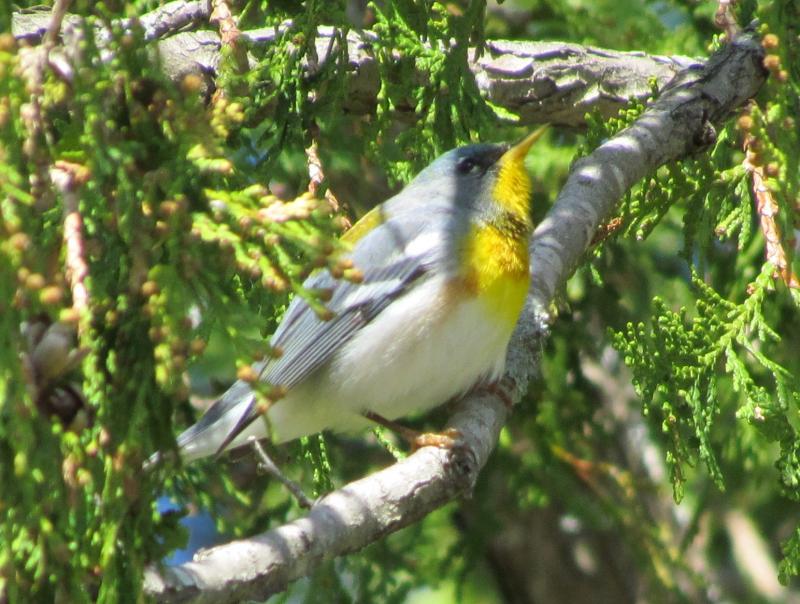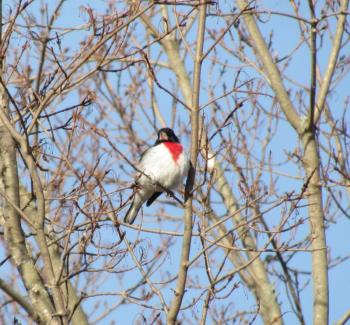We’ve often likened the migration of the billions of birds that move across our hemisphere from south to north each spring to be more like the movements of a living sea that takes place in the airspace above our heads. In fact, most of it goes on while our heads are resting on our bed pillows. That’s because (as faithful readers of our column will know) most birds do the bulk of their migration at night.
Many decades ago, in an attempt to provide a simple concept to describe migration and to assist in setting up management regions for waterfowl hunting regulations, the idea of bird migration “flyways” was introduced. Within the flyway framework is the idea that one set of birds migrates by staying within a flyway that extends along the Atlantic coast in a south-to-north direction. Another set of birds is considered to migrate through the Mississippi Valley of the U.S.—they are said to use the “Mississippi Flyway.” To the West of the Mississippi Flyway is the “Central Flyway,” and along the Pacific Coast is the “Pacific Flyway.” These four regions have been very useful in the waterfowl management world, and they do generally conform to regions within which the same populations of birds move back and forth during migration. But even for waterfowl, they are only general approximations of the reality of how birds migrate across the landscape of our continent. The truth is that the simple “flyway” concept as embodied in the four flyways we described was not really meant to describe how most birds migrate. In fact, the described “flyways” do not bear even a remote resemblance to the pathways that most birds follow in migration.
Even within waterfowl, there are many species that move across three or four of the established “flyways” during their migratory journeys. Some greater and lesser scaup, the birds known as blue-bills by waterfowl hunters because of their beautiful light blue bills, move from their breeding grounds in the Boreal Forest regions of Alaska and western Canada to the Atlantic Coast. The same is true of the three species of scoters—black, surf, and white-winged—that winter along our coastline.
When we start to consider songbirds, the idea that they organize their migrations within four neat south-to-north corridors, completely falls apart. In spring, billions of songbirds are trying to make their way north from South and Central America, the Caribbean, Mexico, and the southern U.S. As this sea of migrating life gets to the southern U.S. (or starts there, in the case of birds wintering in the U.S.), birds are forced to follow the best prevailing rivers of wind. They are generally stopped from continuing if they encounter heavy rain and snow storms, and winds blowing hard from the North, against the direction that they are hoping to head. That means that as these birds depart into the dark skies each night of their journey, they are floated along by winds that may take them in directions that pay no attention to the flyway concept.
Here in Maine, our spring bird migration seemed to have been rather slow over the past week, perhaps stalled because of weather systems to our south that effectively blocked large numbers from making their way north to our area. But the roadblock seemed to break a few days ago, and suddenly thousands of birds made their appearance. Hundreds of yellow-rumped warblers were moving through the treetops in the forests of the Dresden Bog (officially, the Erle R. Kelley Wildlife Management Area) and others reported similar large numbers of white-throated sparrows in places along the coast. Also swept in to Maine by this massive movement of birds where many first-of-the-year sightings including for us, black-and-white and black-throated green warblers, as well as northern parulas, ovenbirds, blue-headed vireos, even some chimney swifts chattering overhead as we walked the neighborhood. Brother Andrew down on the coast texted us of his first rose-breasted grosbeaks and gray catbirds, too.
May you all be enjoying these newly arrived birds as much as we are, and please continue to stay safe and healthy.
Jeffrey V. Wells, Ph.D., is a Fellow of the Cornell Lab of Ornithology and Vice President of Boreal Conservation for the National Audubon Society. Dr. Wells is one of the nation's leading bird experts and conservation biologists and author of “Birder’s Conservation Handbook”. His grandfather, the late John Chase, was a columnist for the Boothbay Register for many years. Allison Childs Wells, formerly of the Cornell Lab of Ornithology, is a senior director at the Natural Resources Council of Maine, a nonprofit membership organization working statewide to protect the nature of Maine. Both are widely published natural history writers and are the authors of the book, “Maine’s Favorite Birds” and “Birds of Aruba, Bonaire, and Curaçao: A Site and Field Guide” from Cornell Press.































